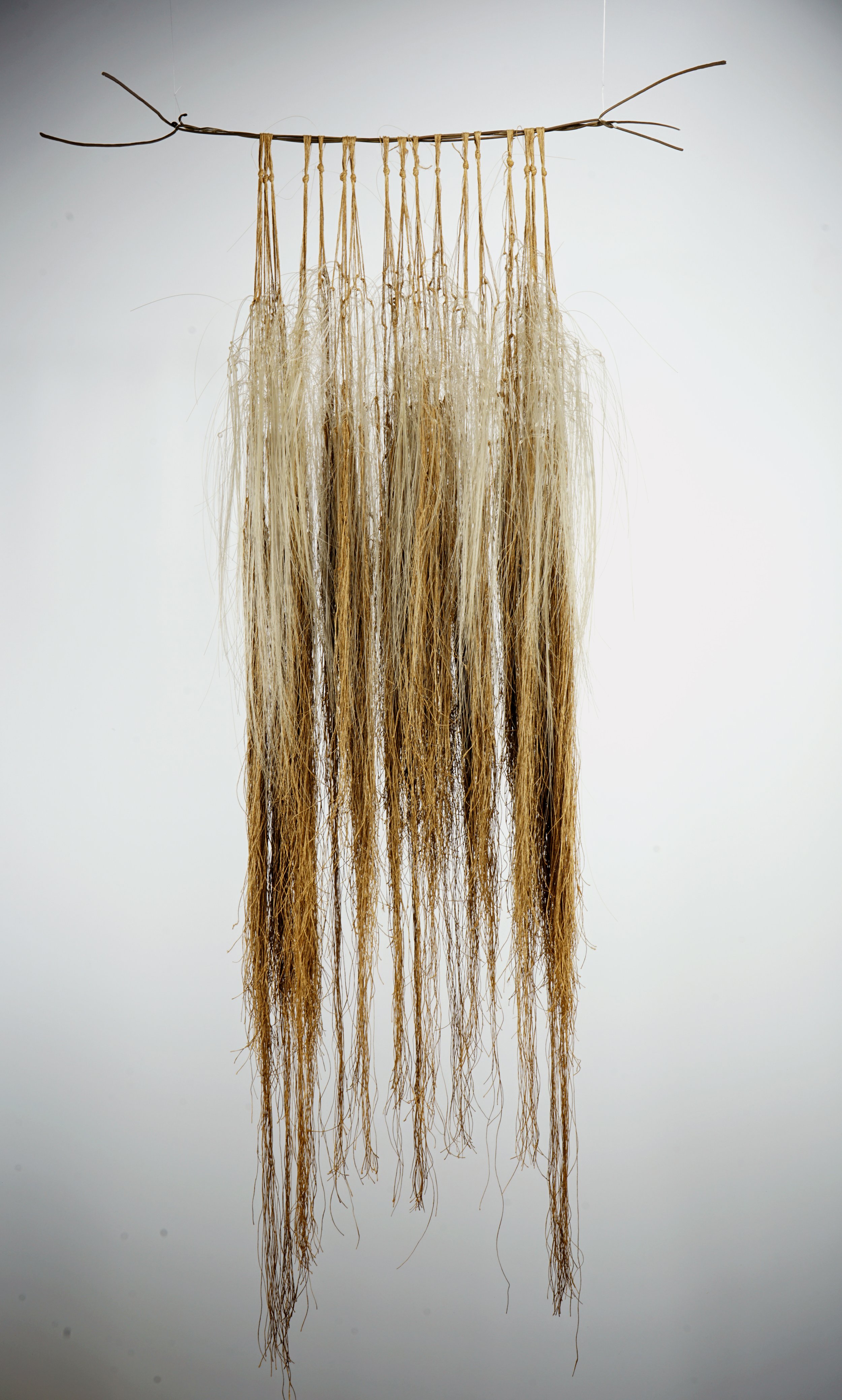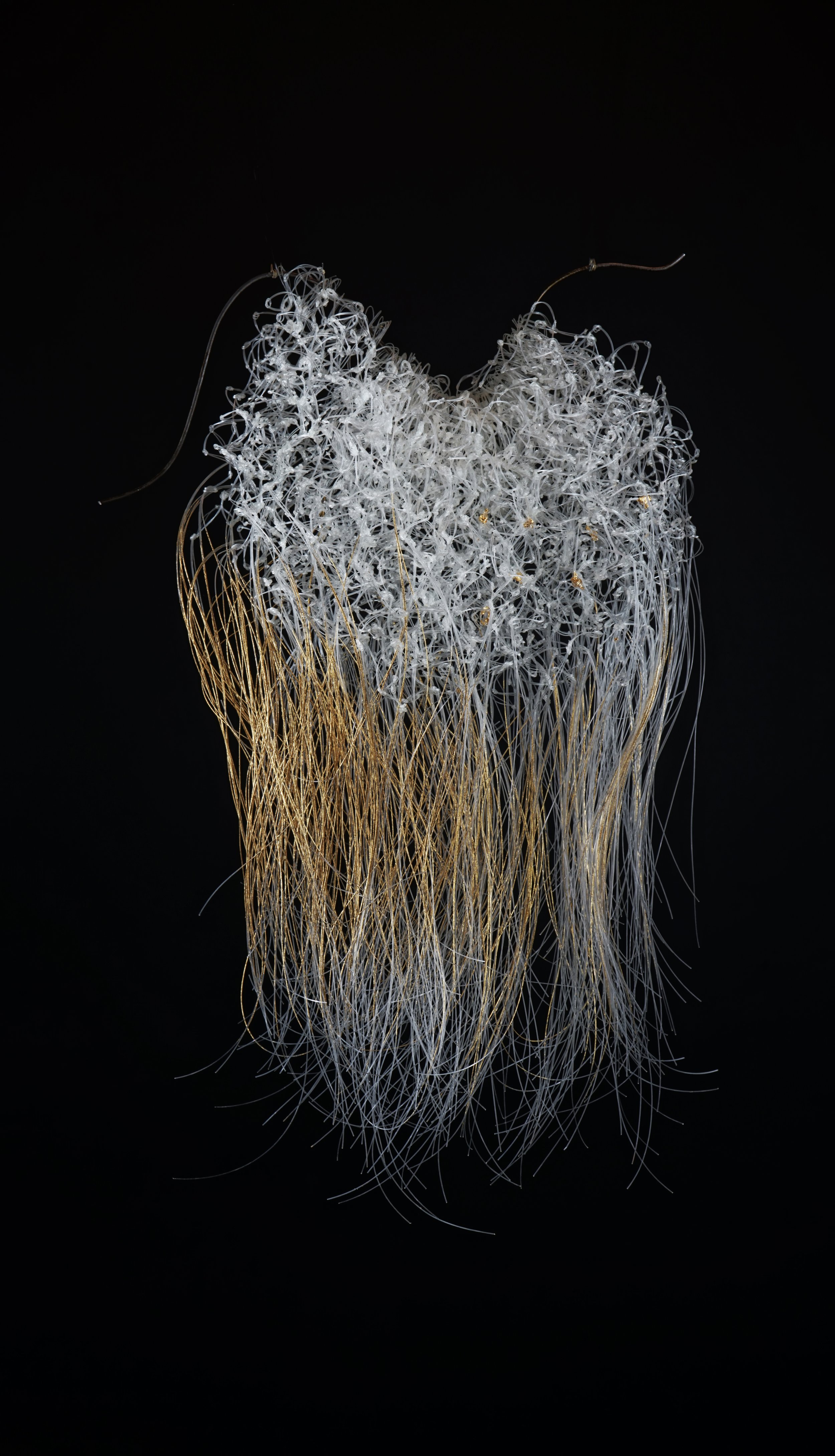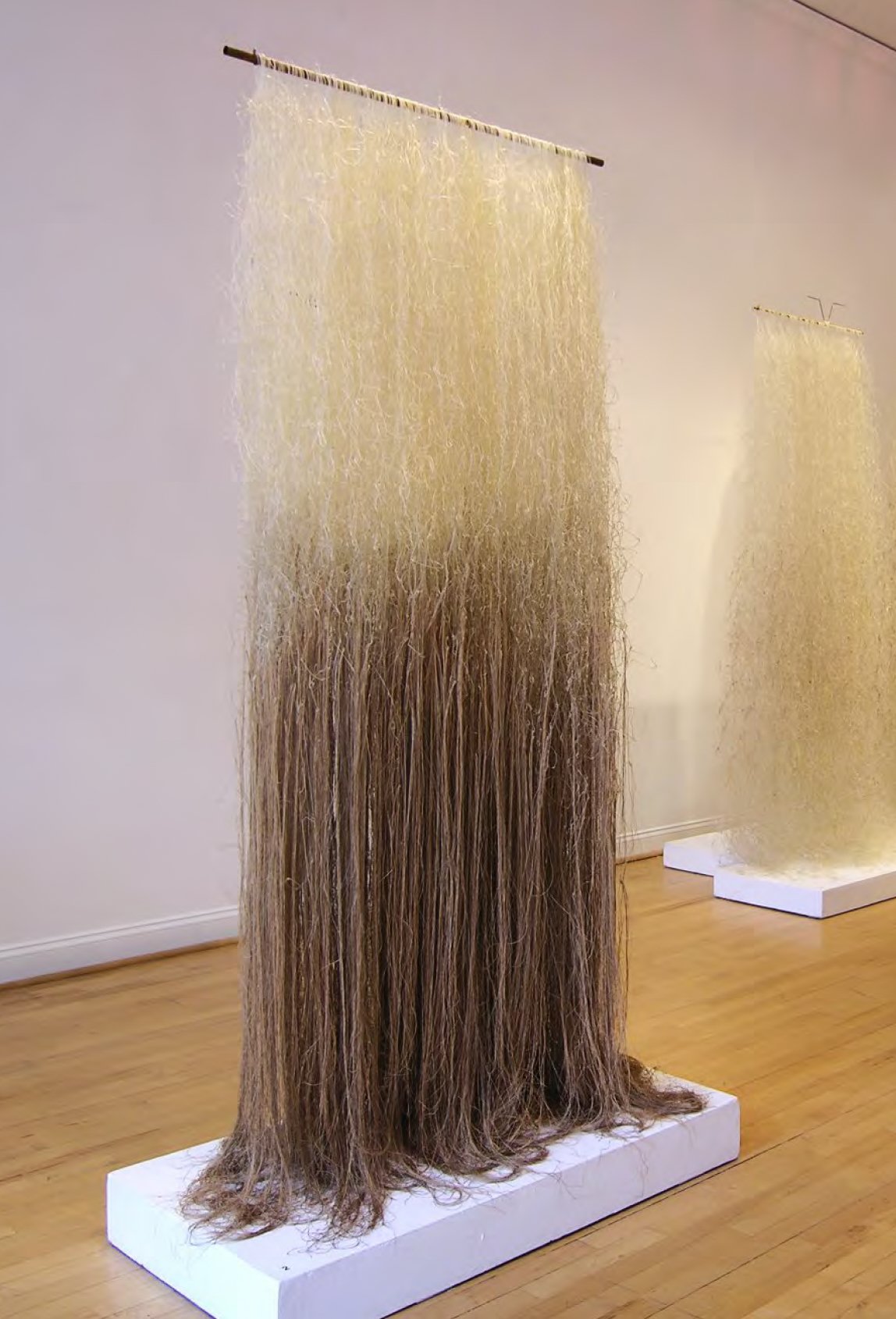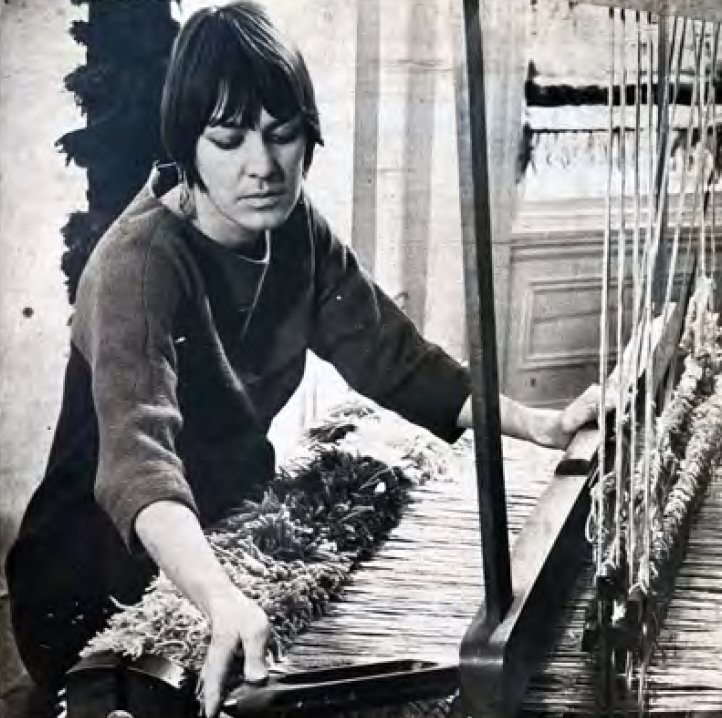
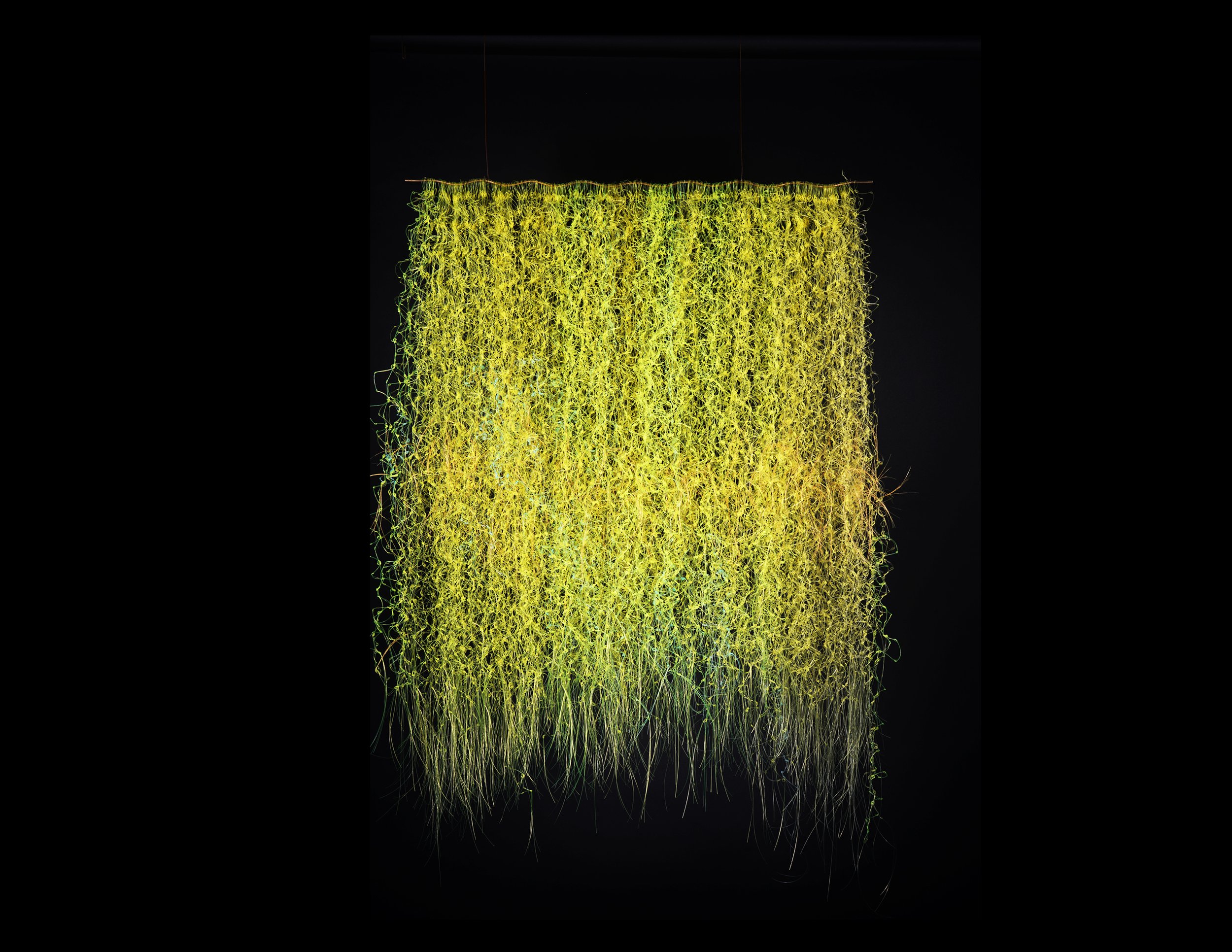
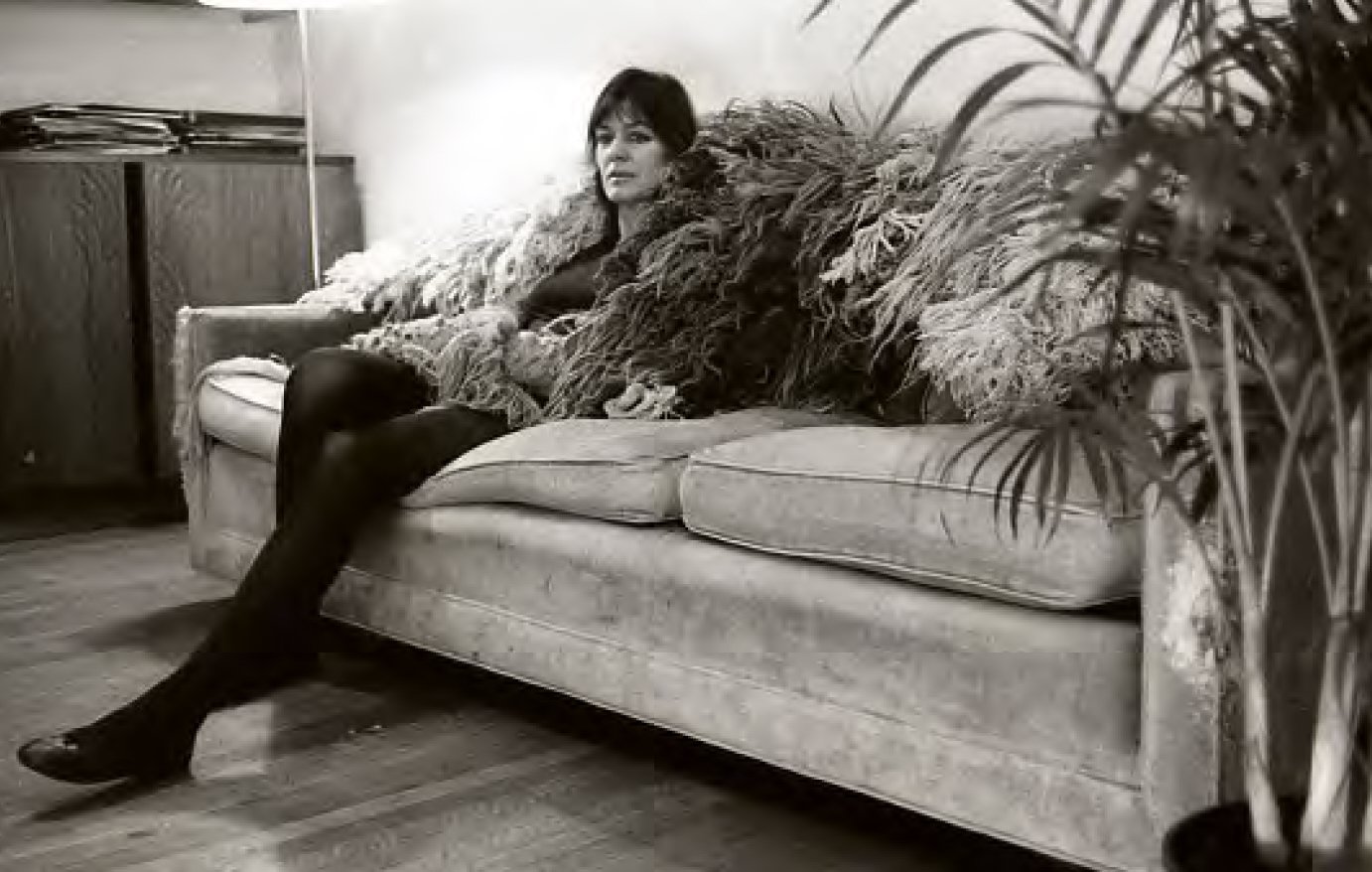
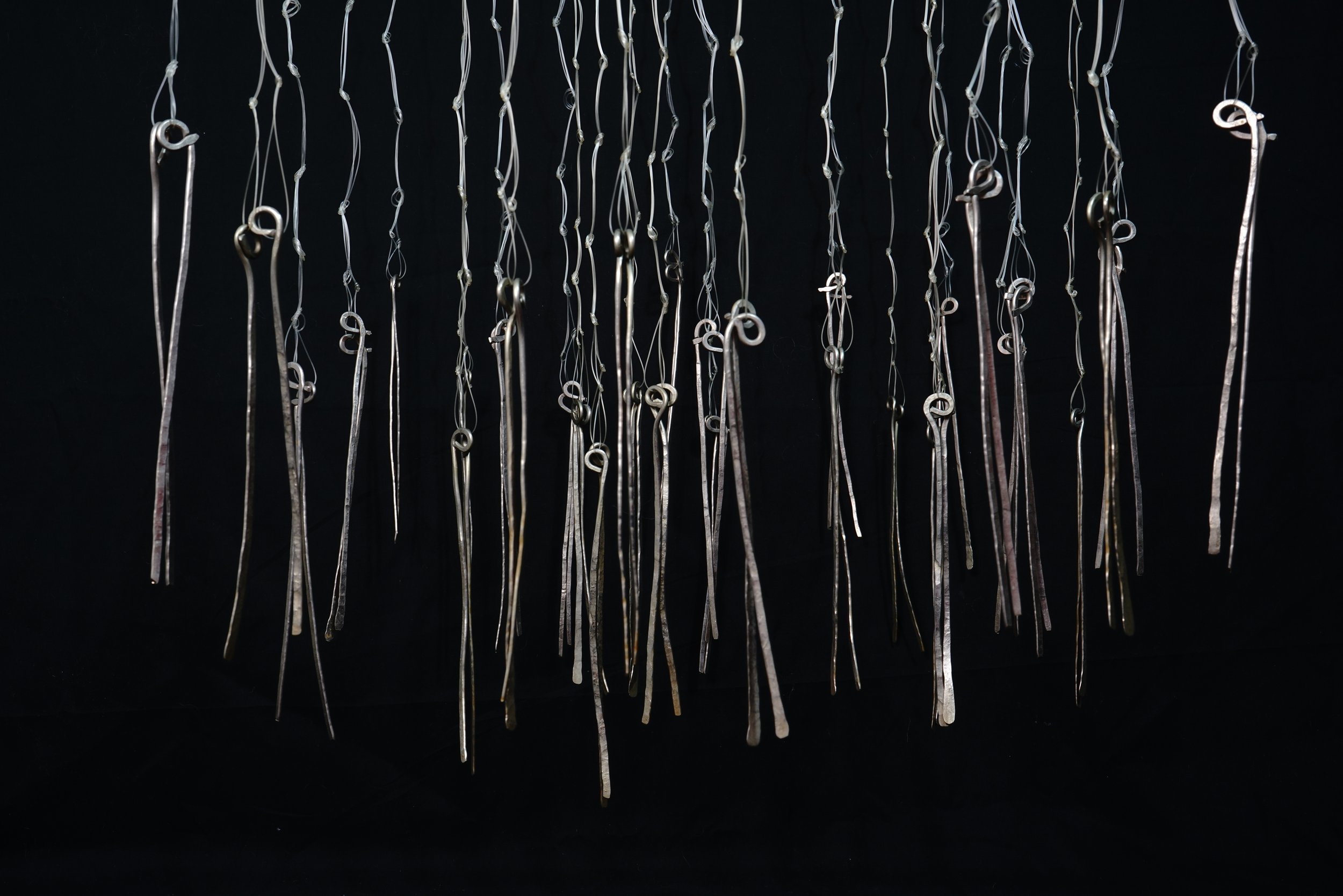
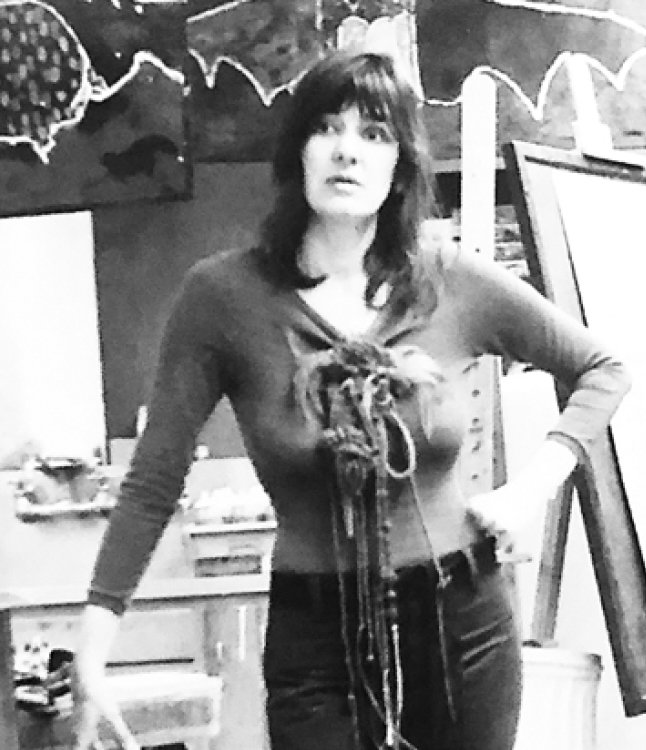

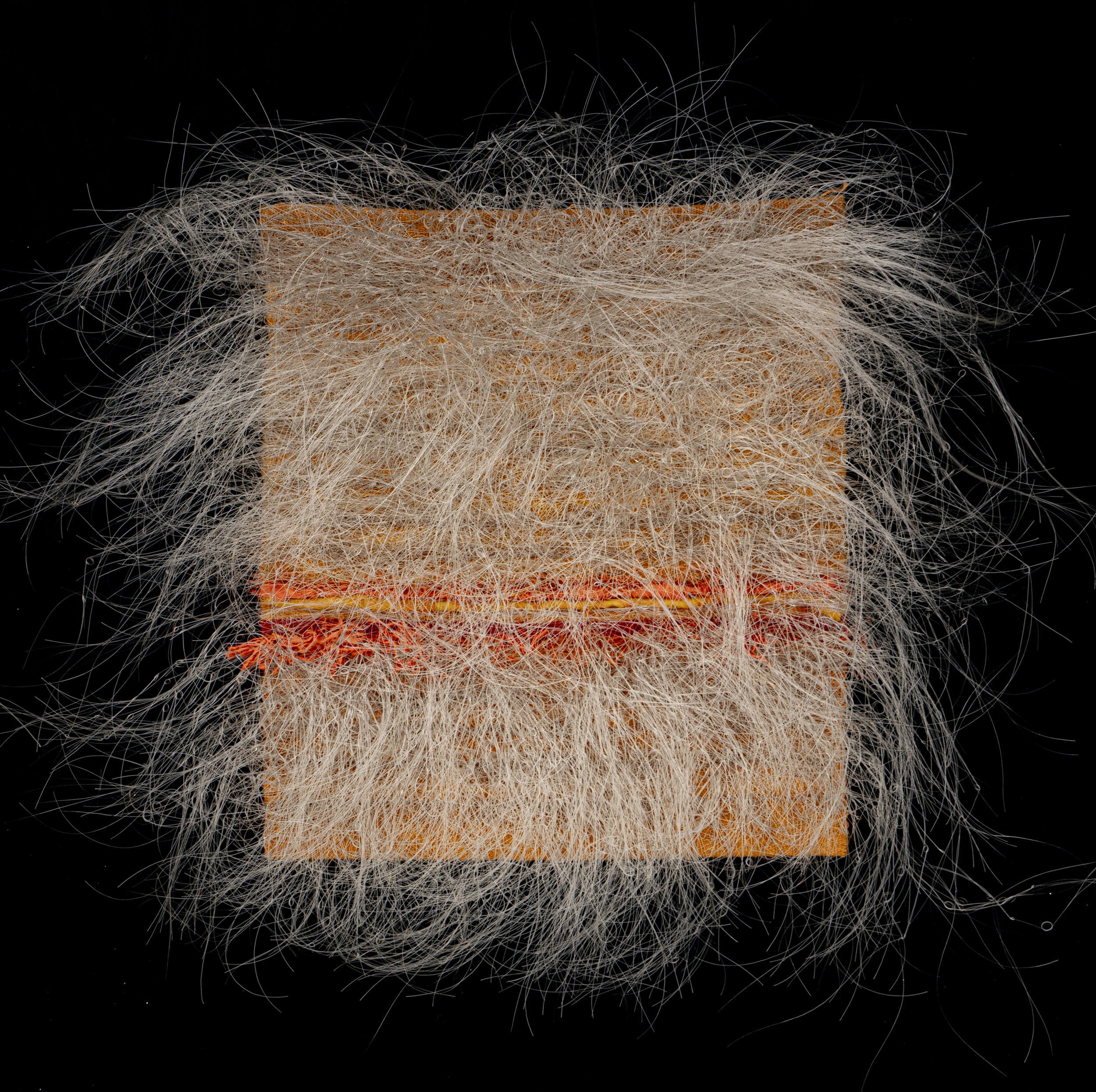
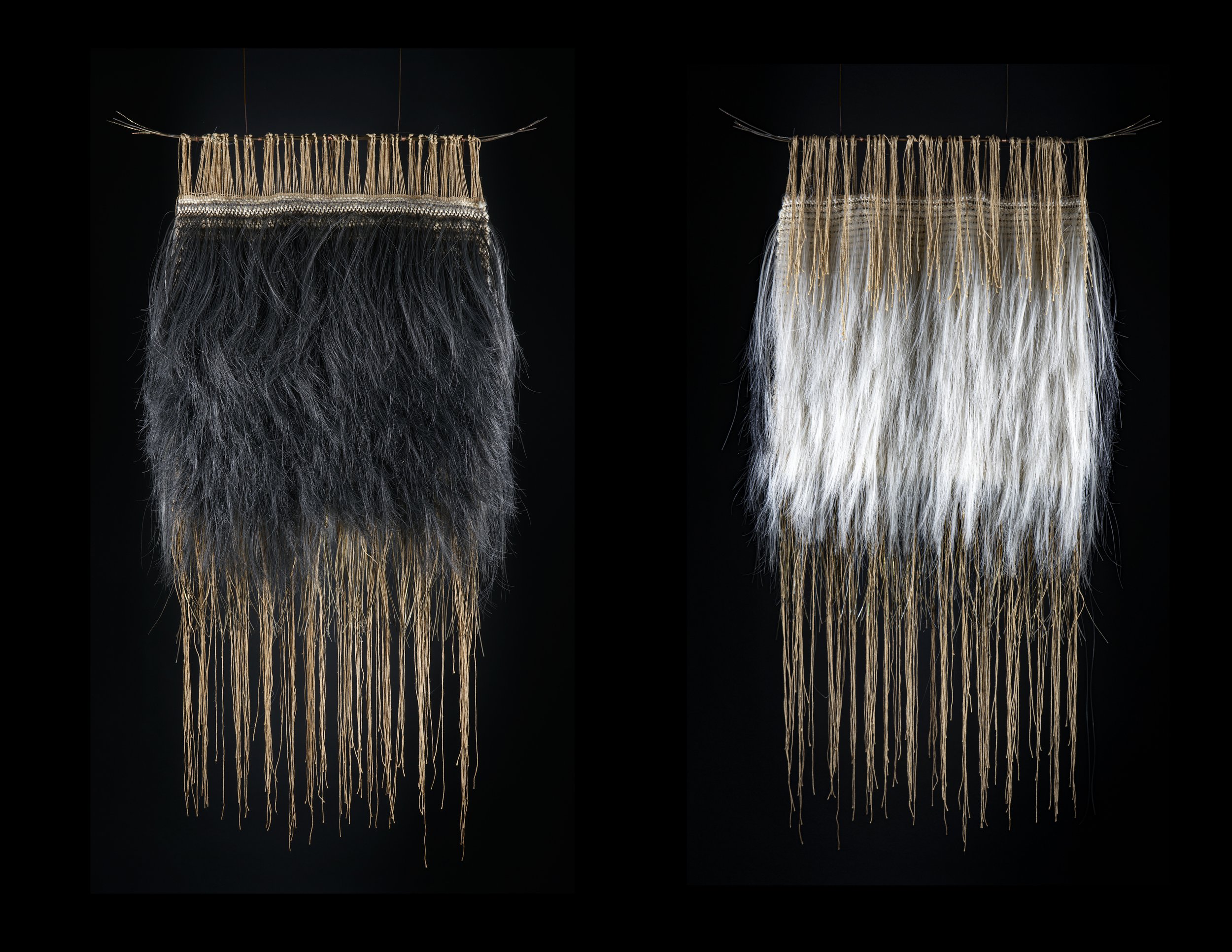
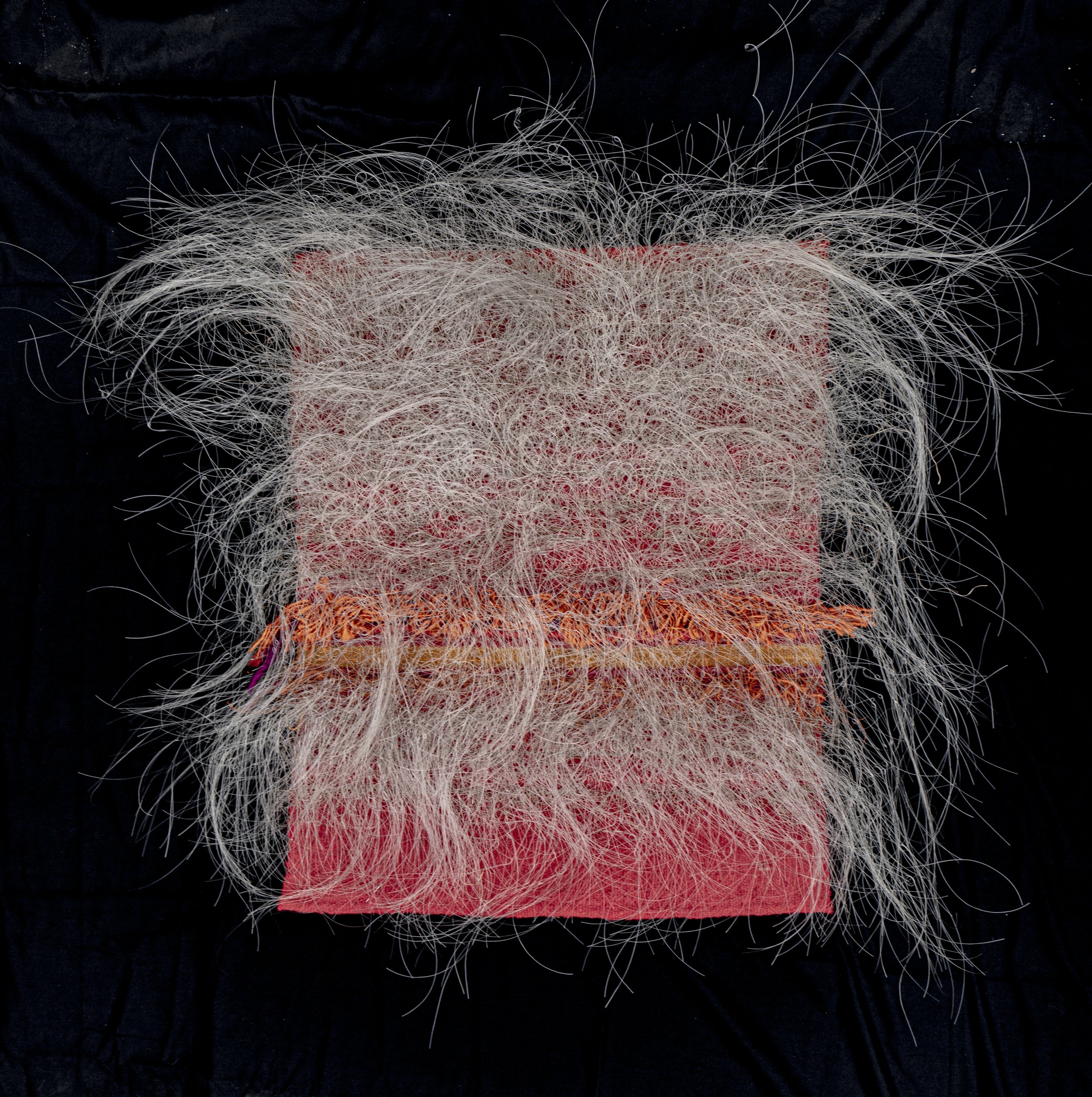
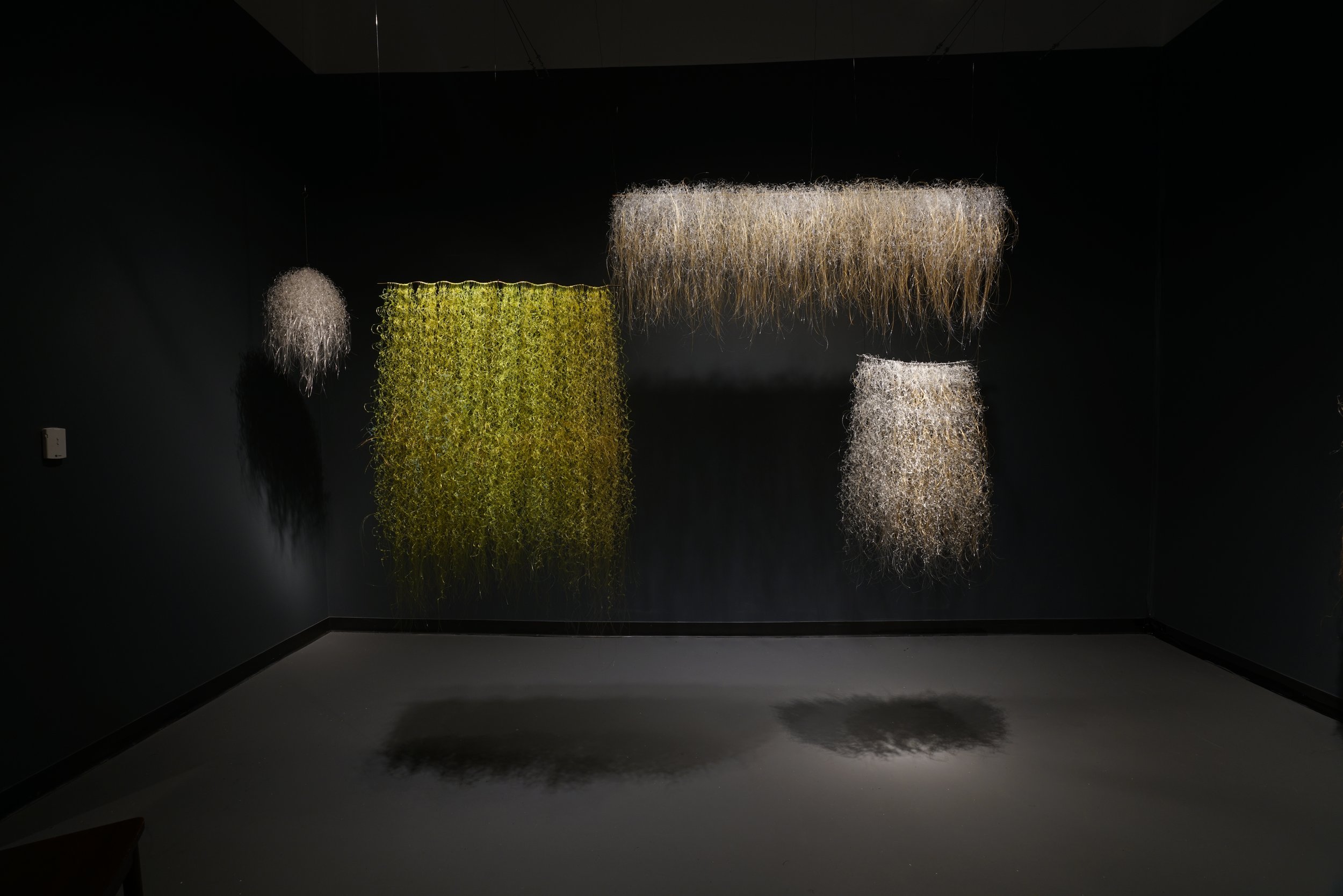
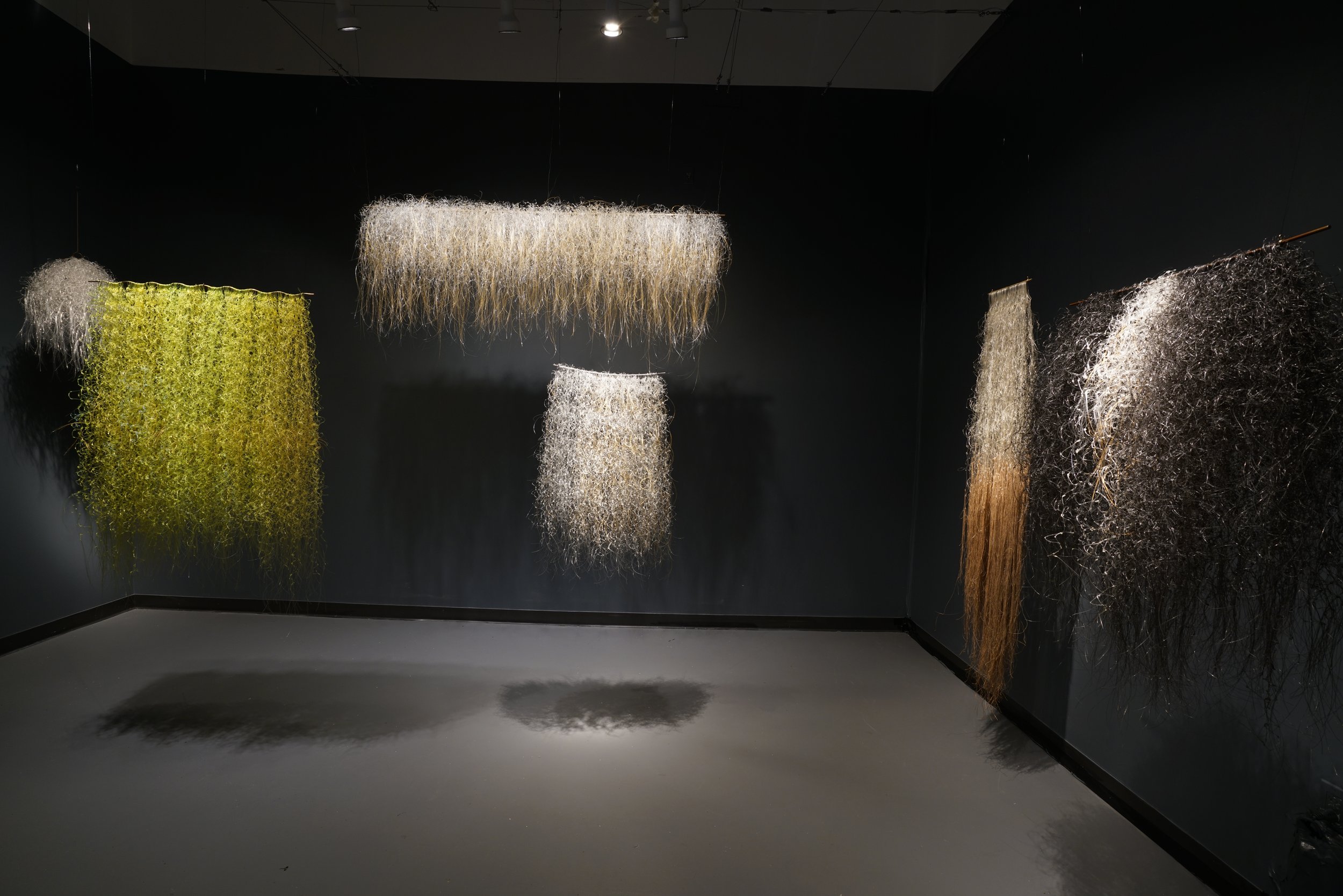
Yvonne Pacanovsky Bobrowicz (1928-2022)
Yvonne Pacanovsky Bobrowicz (1928-2022) was a pioneering American fiber artist who explored the interconnections and continuum of natural and synthetic materials, blending opposites like light with dark, and chaos with order. Her seven-decade career began with studying textiles at The Cranbrook Academy of Art in 1947-49 under Marianne Strengell and later with Anni Alberts at the Philadelphia Museum and School of Industrial Art. Early on in her career, she was influenced by the arts and crafts movements, Bauhaus, and contemporary design, designing functional textiles such as upholstery, drapery, and rugs. These early works showcased a mix of materials such as linen, wool, silk, jute, metalized lurex, fiberglass, and plastic. As a founding member of the Philadelphia Crafts Council and a member of the World Craft Council, Bobrowicz gained exposure to global weaving traditions and techniques.
In the 1970s her art shifted towards large tapestries, woven space dividers, and collaborations with architects like Lou Kahn for woven acoustic panels, and by the 1980s she primarily worked with plastic fibers and monofilament, creating spatial interventions that interacted dynamically with light. Bobrowicz's art, influenced by particle physics and Jungian philosophy, aimed to encapsulate complexity within simplicity. Her sculptures, often integrating monofilament with natural linen and gold leaf, represented dynamic patterns reminiscent of cosmic energy fields.
Bobrowicz has exhibited in prestigious venues like the International Textile Biennale in Lausanne, Switzerland. Her works are housed in both private and museum collections such as that of the Art Institute of Chicago, Philadelphia Museum of Art, Racine Museum of Art in Wisconsin, and the National Museum of Sweden in Stockholm. In 1996, she received the prestigious Pew Fellowship of the Arts, acknowledging her contributions to bridging craft and art. Bobrowicz continued her creative journey until her passing in 2022 at the age of 94, leaving behind a legacy of innovation and symbolism in contemporary sculpture.



